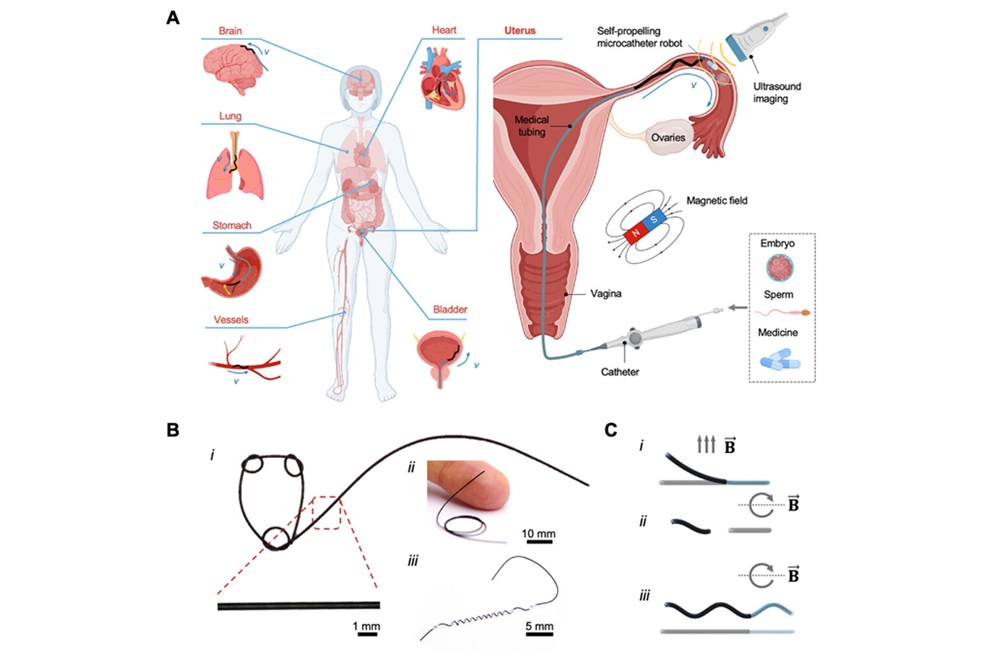Ultrasonic Piezosurgery Reduces Pain and Swelling
|
By HospiMedica International staff writers Posted on 21 Mar 2016 |
A new study shows that the use of ultrasonic piezosurgery equipment reduces trauma, pain, and swelling compared to conventional bone surgery.
Researchers at the University of Naples Federico II (Italy) conducted a study in 40 patients who underwent genioplasty for chin anomalies, with the intention of comparing postoperative complications using ultrasonic piezosurgery instruments instead of traditional rotating drills. The patients were randomly assigned to either of the two procedures, with the main outcomes of the study being pain, healing, and complications from one to 15 days after surgery.
The results showed lower pain scores for patients undergoing piezosurgery, although the difference was significant only on the third and seventh day following surgery. Paresthesia was observed in all patients in both groups up to 15th postoperative day, mainly due to nerve stretching. But at six months sensation was normalized for all patients, and pain and swelling were completely resolved as well. The study was published in the March 2016 issue of the Journal of Craniofacial Surgery.
“Piezosurgery may be a viable alternative to traditional osteotomy technique, as it reduces the degree of inflammation, pain, swelling, and morbidity, improving satisfaction and patient comfort,” concluded senior author Gilberto Sammartino, MD, DDS, and colleagues of the department of oral surgery. “Bone undergoes less stress during surgery. Pain and discomfort were minimal compared to the traditional technique, especially in the immediate postoperative period of healing.”
Piezoelectric bone surgery is a process that utilizes ultrasonic vibrations to cut hard tissue, while leaving soft tissues untouched by the process. The ultrasonic frequency is modulated to 29 kHz, a low frequency that enables the cutting of the mineralized structures alone. The power is adjusted from 2.8 to 16 watts, with preset power settings for various types of bone density. The tip itself vibrates within a range of 60–200 µm, which allows clean cutting with precise incisions.
Related Links:
University of Naples Federico II
Researchers at the University of Naples Federico II (Italy) conducted a study in 40 patients who underwent genioplasty for chin anomalies, with the intention of comparing postoperative complications using ultrasonic piezosurgery instruments instead of traditional rotating drills. The patients were randomly assigned to either of the two procedures, with the main outcomes of the study being pain, healing, and complications from one to 15 days after surgery.
The results showed lower pain scores for patients undergoing piezosurgery, although the difference was significant only on the third and seventh day following surgery. Paresthesia was observed in all patients in both groups up to 15th postoperative day, mainly due to nerve stretching. But at six months sensation was normalized for all patients, and pain and swelling were completely resolved as well. The study was published in the March 2016 issue of the Journal of Craniofacial Surgery.
“Piezosurgery may be a viable alternative to traditional osteotomy technique, as it reduces the degree of inflammation, pain, swelling, and morbidity, improving satisfaction and patient comfort,” concluded senior author Gilberto Sammartino, MD, DDS, and colleagues of the department of oral surgery. “Bone undergoes less stress during surgery. Pain and discomfort were minimal compared to the traditional technique, especially in the immediate postoperative period of healing.”
Piezoelectric bone surgery is a process that utilizes ultrasonic vibrations to cut hard tissue, while leaving soft tissues untouched by the process. The ultrasonic frequency is modulated to 29 kHz, a low frequency that enables the cutting of the mineralized structures alone. The power is adjusted from 2.8 to 16 watts, with preset power settings for various types of bone density. The tip itself vibrates within a range of 60–200 µm, which allows clean cutting with precise incisions.
Related Links:
University of Naples Federico II
Latest Surgical Techniques News
- Catheter-Based Procedures Offer Less Invasive Option for Treatment of Valvular Disease
- Laparoscopic Surgery Improves Outcomes for Severe Newborn Liver Disease
- Novel Endoscopy Technique Provides Access to Deep Lung Tumors
- New Study Findings Could Halve Number of Stent Procedures
- Breakthrough Surgical Device Redefines Hip Arthroscopy
- Automated System Enables Real-Time "Molecular Pathology" During Cancer Surgery
- Groundbreaking Procedure Combines New Treatments for Liver Tumors
- Ablation Reduces Stroke Risk Associated with Atrial Fibrillation
- Optical Tracking Method Identifies Target Areas in Robot-Assisted Neurosurgery
- General Anesthesia Improves Post-Surgery Outcomes for Acute Stroke Patients
- Drug-Coated Balloons Can Replace Stents Even in Larger Coronary Arteries
- Magnetic Kidney Stone Retrieval Device Outperforms Ureteroscopic Laser Lithotripsy
- Absorbable Skull Device Could Replace Traditional Metal Implants Used After Brain Surgery
- Magic Silicone Liquid Powered Robots Perform MIS in Narrow Cavities
- 'Lab-on-a-Scalpel' Provides Real-Time Surgical Insights for POC Diagnostics in OR
- Biodegradable Brain Implant Prevents Glioblastoma Recurrence
Channels
Critical Care
view channel
Bioadhesive Strategy Prevents Fibrosis Around Device Implants on Peripheral Nerves
Peripheral nerves connect the brain and spinal cord to muscles, organs, and sensory systems, making them key targets for treating neurological and systemic diseases. However, implantable bioelectronic... Read more
Miniature Non-Invasive Robotic Catheters to Improve Infertility Treatments
Minimally invasive procedures in reproductive and gynaecological medicine are often limited by the difficulty of navigating narrow, delicate anatomical pathways without damaging surrounding tissue.... Read morePatient Care
view channel
Revolutionary Automatic IV-Line Flushing Device to Enhance Infusion Care
More than 80% of in-hospital patients receive intravenous (IV) therapy. Every dose of IV medicine delivered in a small volume (<250 mL) infusion bag should be followed by subsequent flushing to ensure... Read more
VR Training Tool Combats Contamination of Portable Medical Equipment
Healthcare-associated infections (HAIs) impact one in every 31 patients, cause nearly 100,000 deaths each year, and cost USD 28.4 billion in direct medical expenses. Notably, up to 75% of these infections... Read more
Portable Biosensor Platform to Reduce Hospital-Acquired Infections
Approximately 4 million patients in the European Union acquire healthcare-associated infections (HAIs) or nosocomial infections each year, with around 37,000 deaths directly resulting from these infections,... Read moreFirst-Of-Its-Kind Portable Germicidal Light Technology Disinfects High-Touch Clinical Surfaces in Seconds
Reducing healthcare-acquired infections (HAIs) remains a pressing issue within global healthcare systems. In the United States alone, 1.7 million patients contract HAIs annually, leading to approximately... Read moreHealth IT
view channel
EMR-Based Tool Predicts Graft Failure After Kidney Transplant
Kidney transplantation offers patients with end-stage kidney disease longer survival and better quality of life than dialysis, yet graft failure remains a major challenge. Although a successful transplant... Read more
Printable Molecule-Selective Nanoparticles Enable Mass Production of Wearable Biosensors
The future of medicine is likely to focus on the personalization of healthcare—understanding exactly what an individual requires and delivering the appropriate combination of nutrients, metabolites, and... Read moreBusiness
view channel
Philips and Masimo Partner to Advance Patient Monitoring Measurement Technologies
Royal Philips (Amsterdam, Netherlands) and Masimo (Irvine, California, USA) have renewed their multi-year strategic collaboration, combining Philips’ expertise in patient monitoring with Masimo’s noninvasive... Read more
B. Braun Acquires Digital Microsurgery Company True Digital Surgery
The high-end microsurgery market in neurosurgery, spine, and ENT is undergoing a significant transformation. Traditional analog microscopes are giving way to digital exoscopes, which provide improved visualization,... Read more
CMEF 2025 to Promote Holistic and High-Quality Development of Medical and Health Industry
The 92nd China International Medical Equipment Fair (CMEF 2025) Autumn Exhibition is scheduled to be held from September 26 to 29 at the China Import and Export Fair Complex (Canton Fair Complex) in Guangzhou.... Read more















